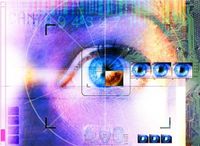In a groundbreaking development, researchers are harnessing the power of artificial intelligence (AI) to tackle pressing global health issues, particularly in the realm of myopia and anemia. With myopia affecting over two billion people worldwide, and anemia impacting nearly two billion individuals, innovative AI applications are emerging as potential game-changers in diagnosis and treatment.
Myopia, or nearsightedness, is projected to affect nearly half of the global population by 2050, leading to significant vision impairment and economic burdens. In a recent literature review published on March 18, 2025, in the journal Pediatric Investigation, Dr. Li Li, Dr. Jifeng Yu, and Dr. Nan Liu from the Department of Ophthalmology at Capital Medical University, China, delve into how AI can revolutionize the detection and management of this condition.
AI technologies, particularly machine learning (ML) and deep learning (DL), are capable of analyzing complex medical data to support disease diagnosis, identify risk factors, and predict clinical outcomes. For instance, AI models can be trained to detect myopia from fundus photos and optical coherence tomography images. By feeding a model a large quantity of images from myopic patients, AI can learn to identify subtle changes in the retina associated with myopia, thus enabling accurate diagnoses.
Moreover, tools like the Vivior monitor utilize ML algorithms to track visual behaviors in children aged 6 to 16, identifying changes that may indicate the onset of myopia. This early detection is crucial, as it often goes unnoticed in younger populations. Dr. Li explained, “An XGBoost-based model can be fed large quantities of longitudinal data, allowing it to learn the outcomes and associated risk factors of myopia in numerous patients.” Such advancements could significantly shape clinical practices and policies aimed at controlling myopia.
However, the challenges of integrating AI into clinical practice remain. Ensuring the quality of datasets used for training AI models is essential, as biases or inaccuracies can lead to erroneous predictions. Furthermore, AI models may not yet provide the clinical basis for their diagnoses, which could hinder acceptance among medical professionals. Dr. Jifeng Yu noted, “While our study highlights the remarkable progress made in the clinical application of AI in myopia, further studies are needed to overcome the technological challenges.”
In a parallel development, researchers from Purdue University, Rwanda Biomedical Center, and University of Rwanda are exploring AI's potential in diagnosing anemia, a condition marked by low levels of hemoglobin that particularly affects children in low- and middle-income countries. A new study reported in Biophotonics Discovery presents a novel approach using simple grayscale photographs of the eye's conjunctiva to predict anemia.
By utilizing standard smartphones, the researchers took over 12,000 eye photos from 565 children aged 5 to 15. They applied machine learning alongside a technique called radiomics, which analyzes patterns in medical images, to identify features linked to anemia. This innovative method doesn't rely on color data, thus avoiding complications from varying light conditions or camera models, making it practical for diverse settings.
Shaun Hong, a PhD student at Purdue University and first author of the study, expressed optimism about the findings, stating, “The results show a strong connection between specific spatial features and anemia status, pointing to the possibility of screening for anemia using just a smartphone and basic software.” This approach could offer a fast, noninvasive, and affordable way to identify at-risk children, particularly in remote or under-resourced communities.
Professor Young L. Kim, the corresponding author, emphasized that while this technology is not intended to replace traditional testing, it could help prioritize individuals needing further evaluation and treatment. With further development, these methods could be integrated into mobile health tools to support early intervention in areas where healthcare access is limited.
Both studies highlight the remarkable potential of AI in transforming healthcare practices. As AI continues to evolve, it is becoming increasingly central to addressing global health challenges. Organizations and researchers are leveraging advancements in AI infrastructure, such as high-speed GPU memory and cloud-based models, to enhance diagnostic capabilities.
In the context of myopia, the integration of AI can lead to significant innovations and efficiencies in business operations, improving decision-making processes and optimizing resource allocation. As John Lee, Principal AI Infrastructure and Platform Lead at Microsoft Azure, noted, “Organizations aiming to compete and grow will need to integrate this theory into their AI frameworks to stay ahead in an ever-advancing technological landscape.”
As we look to the future, AI's role in diagnosing and managing conditions like myopia and anemia may prove crucial. By harnessing the power of technology, researchers and healthcare professionals can work towards more effective solutions that enhance patient care and improve outcomes on a global scale.



